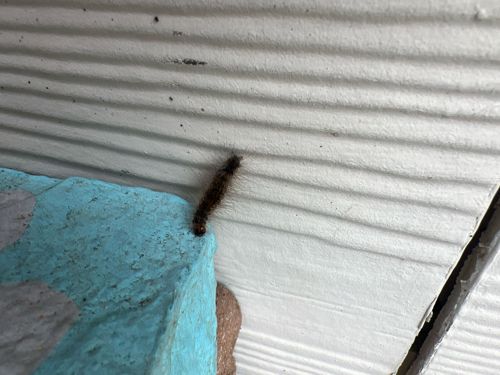Eastern Tent Caterpillar
Scientific Name: Malacosoma americanum
Order & Family: Lepidoptera, Lasiocampidae
Size: Larvae (caterpillars) can grow up to 2.5 inches (6 cm) in length. Adult moths have a wingspan of approximately 1 to 2 inches (2.5 to 5 cm).

Natural Habitat
Eastern Tent Caterpillars are typically found in deciduous forests, woodlands, orchards, and suburban areas where their host trees are present. They build their silken tents in the crotches of branches of these host trees.
Diet & Feeding
The caterpillars primarily feed on the leaves of various deciduous trees, particularly those in the family Rosaceae, such as cherry, apple, crabapple, and plum trees.
Behavior Patterns
Eastern Tent Caterpillars are social during their larval stage, living communally in silken tents they construct in the crotches of trees. They emerge in early spring, feed on leaves, and expand their tent as they grow. They follow silk trails laid by other caterpillars to find food. Once mature, they disperse to find a place to pupate, often spinning cocoons in sheltered locations. The adult moths emerge in early summer, mate, and lay eggs.
Risks & Benefits
Potential risks include defoliation of host trees, especially during outbreaks, which can weaken trees or make them more susceptible to other stressors. While their hairy bodies can cause skin irritation in some sensitive individuals if touched, they are not venomous. Benefits include being a food source for various birds and parasitic insects, playing a role in forest ecosystems.
Identified on: 8/26/2025